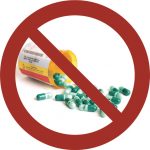 Systemic antibiotics, such as doxycycline and minocycline, have long been the mainstay of treating moderate to severe acne. But many are concerned about the long-term use of antibiotics, the development of antibiotic resistance, and concern regarding adverse effects with long-term use. There are a number of alternatives to oral antibiotics in the treatment of acne. Similarly, there are several alternatives to topical antibiotics.
Systemic antibiotics, such as doxycycline and minocycline, have long been the mainstay of treating moderate to severe acne. But many are concerned about the long-term use of antibiotics, the development of antibiotic resistance, and concern regarding adverse effects with long-term use. There are a number of alternatives to oral antibiotics in the treatment of acne. Similarly, there are several alternatives to topical antibiotics.
Spironolactone for treating acne
Spironolactone is better known as a mild blood pressure medication and potassium-sparing diuretic, but it is also an inhibitor of the androgen receptor, and has been widely used to treat acne for decades. It is commonly used for acne in adult women, particularly those with acne flares during menses or with an acne distribution on the lower face, which typically indicates a hormonal contribution. However, spironolactone may be helpful in women of all ages regardless of acne distribution. Menstrual irregularities is the most commonly observed side-effect. Patients should not become pregnant while taking spironolactone. There has been some question as to whether potassium levels need to be monitored while on spironolactone. Young healthy women do not require potassium monitoring while on spironolactone.
Oral Contraceptives for treating acne
Oral contraceptives that contain both an estrogen and a progestin (combined oral contraceptives) decrease free testosterone. Progestin-only contraceptives are associated with an increase in acne. Contraceptives for acne are contraindicated in women older than age 35, smokers of more than 15 cigarettes per day, those with hypertension, and those with various conditions with increased risk for thromboembolism, among other contraindications. Overall, combined oral contraceptives are a good choice for women with acne, especially those also desiring contraception. Oral contraceptives can also be used with spironolactone.
Isotretinoin for acne
Isotretinoin is a retinoid, and is often better known by its old brand name, Accutane. It is very effective at treating acne. It is the only acne medication that can be said to be disease-modifying. Many patients that complete a course of isotretion will get clear of acne and stay clear of acne. However, some do relapse and may require an additional course or isotretinoin, or other acne treatments. The higher the accumulated dose of isotretinoin, the greater the likelihood of getting and staying clear of acne. Isotretinoin causes birth defects if taken while pregnant. For this reason, patients are required to be enrolled in a program called iPledge, to ensure that they are not pregnant while taking the medication. Monthly pregnancy tests are required for female patients. Like all medicaitons, there is a long list of potential side effects, but isotretinoin is generally well-tolerated, and most patients complete their course of treatment. The most common adverse effect is dryness of the lips and eyes. Muscle and joint pain is not uncommon. There are reports of associations of isotretinoin with depression and inflammatory bowel disease, but these associations are uncertain. Baseline blood tests are done when using isotretinoin, and periodic assessments during the course of treatment.
Laser and Light Therapy For Acne
Blue light is approved for treating acne. When used regularly, blue light has been shown in clinical trials to improve acne. Photodynamic therapy is a treatment in which 5-aminolevulinic acid is first applied to the face. This preferentially concentrates in the pilosebaceous unit. A light source, such as blue light, red light, or pulsed dye laser, is then used to activate the medication, ultimately resulting in damage to the pilosebaceous unit and killing of the bacteria P. acnes. Photodynamic therapy is an off-label use. Results of clinical studies are mixed, and large scale studies are lacking. Pulsed dye laser and intense pulsed light (IPL) therapy have also been used to treat acne. These modalities may be particularly helpful in inflammatory acne and in acne with erythematous scarring, since pulsed dye laser and IPL can reduce erythema and vascularity.
Alternatives to topical antibiotics in treating acne
Topical clindamycin, alone or in combination, is a mainstay of acne treatment. Used alone, however, antibiotic resistance can develop. It should be used along with a benzoyl peroxide product, or as a combination product. Topical acne treatment that are not antibiotics include azeleic acid, tretinoin, adapalene, benzoyl peroxide, and salicylic acid. Tretinoin and azeleic acid are prescription products. Adapalene is an over-the-counter topical retinoid, and benzoyl peroxide and salicylic acid are common ingredients in many over-the-counter acne preparations.
Chemical Peels For Acne
Chemical peels are especially helpful for comedonal acne (blackheads and whiteheads), as they can unclog the pilosebaceous unit. Superficial glycolic acid peels or salicylic acid peels are commonly used. Chemical peels are also helpful in treating any hyperpigmented marks caused by acne.
Facials for treating acne
Some acne lesions, such as stubborn blackheads and comedones, require extraction. A cleansing facial in which comedones are extracted are a helpful adjunct to treating acne, especially in patients with primarily comedonal acne.

